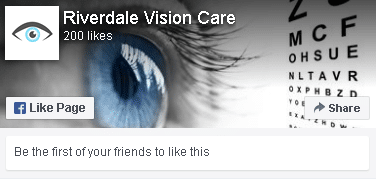Glaucoma: The Silent Thief of Sight
Glaucoma is known to be the silent thief of sight. Glaucoma is a disease where the eye’s optic nerve gets damaged generally due to pressure buildup within, resulting in progressive and irreversible loss of vision. What is alarming about glaucoma is that in the early to middle stages of the disease, you will not experience any symptoms, even if you have lost vision. This is because glaucoma begins by taking away our peripheral (or side) vision before it starts to reduce our central vision, potentially to the point of blindness. Humans are not very in-tune with what is going on off to the sides of our vision; we are more in-tune with what is straight ahead. This is why glaucoma is known as the silent thief of sight. But the good news is that glaucoma can be diagnosed during a comprehensive eye exam and is treatable.
Often, glaucoma is caused by high pressure inside the eye that damages the optic nerve, but you can have glaucoma even with “normal” eye pressure. Eye pressure is measured at your eye exam, typically with a device that quickly and lightly puffs air at your eye (yes, we know this test is a nuisance, but now you know how important it is!) or by using a yellow drop in the eye and a blue light. While this gives our eye doctor some information as to your risk for glaucoma, glaucoma is not diagnosable just through a single test. At your eye exam, we also look directly at your optic nerve to determine if it looks healthy or potentially sick. If findings on an eye exam look “suspicious” for glaucoma, there are additional tests available to help us diagnose the condition.
Treatment options for glaucoma range from daily eye drops to laser procedures (not to be confused with LASIK) to more involved eye surgeries. The goal of treatment is to slow the progressive loss of vision as there is no “cure” to fully stop glaucoma.
While glaucoma incidence increases with age, patients of any age can develop glaucoma. Having a close relative such as a sibling or parent with glaucoma may mean you are at a higher risk for developing the disease.
Here at Riverdale Vision Care, we offer the latest in technology to help diagnose early glaucoma. Ocular coherence tomography (OCT) is a diagnostic test that counts up the number of nerve cells that form your optic nerve, and gives us some idea if you have a normal or low amount of nerve cells. A low number of nerve cells may indicate glaucoma. We offer this imaging technology as an optional part of your comprehensive eye exam to screen for early detection of glaucoma which may not show up on other “routine” tests. It is a wonderful tool to see if “things are getting worse” because we can repeat it over time and see if your nerve cell counts are declining from disease development or progression. Since early detection of glaucoma can prevent vision loss, it is important that you schedule your yearly eye exam. There is no better time to have your exam than January which is Glaucoma Awareness Month. Don’t wait until it is too late to save your vision!






Leave a Reply
Want to join the discussion?Feel free to contribute!